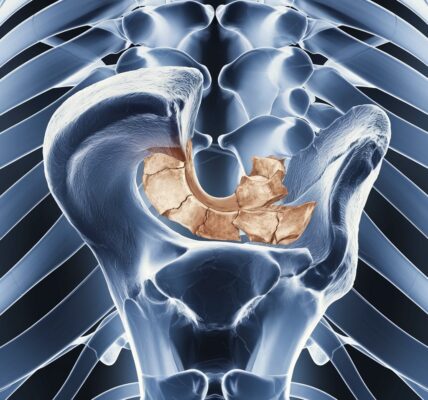They are similar, but not the same: learn how to differentiate burnout, depression and stress
What are the differences between burnout , depression and stress?
Burnout syndrome , depression, and stress are distinct conditions, although they may share some symptoms and sometimes occur simultaneously .
Burnout is an emotional disorder characterized by symptoms such as physical exhaustion, stress and extreme exhaustion, resulting from stressful working conditions. Therefore, the condition affects a large number of professionals who deal with frequent responsibilities and work under great pressure on a daily basis .
This syndrome can also affect professionals when they are in charge of or plan very difficult work-related objectives, resulting in a feeling of incapacity, which can develop into deep depression .
That’s why it’s so important to not only know how to differentiate burnout , depression and stress, but also to know the main symptoms of burnout. Among them, we can mention:
- frequent headaches;
- excessive fatigue, both mental and physical;
- changes in appetite;
- insomnia;
- difficulties in concentration;
- feelings of failure and insecurity;
- constant negativity;
- feelings of defeat and hopelessness;
- feelings of incompetence;
- sudden mood swings;
- isolation ;
- fatigue;
- high blood pressure;
- muscle pain;
- gastrointestinal problems;
- change in heartbeat.
Burnout syndrome is diagnosed by a specialist after the patient undergoes a clinical analysis. As a rule, psychiatrists are the health professionals indicated to identify the condition and provide guidance on the best treatment approach, depending on the case.
According to the WHO
, depressive disorder is in 4th place among the main causes of burden, representing 4.4% of the burden caused by all diseases during life . Generally, symptoms of depression include:
- depressive mood — a feeling of sadness, self-devaluation and guilt, so that the individual believes that he has forever lost the ability to feel joy and/or pleasure;
- motor retardation — includes, among others, lack of energy, excessive tiredness, lack of concentration, complaints of memory problems and slow thinking;
- drowsiness or insomnia — insomnia is usually terminal or intermediate, while drowsiness is more associated with depression called “atypical”;
- changes in appetite — which may increase or decrease, with, in some cases, a greater interest in sweets and/or carbohydrates;
- decreased sexual interest ;
- presence of pain and diffuse physical symptoms — some examples are tiredness, malaise, sweating, digestive complaints and tachycardia.
The diagnosis of depression is clinical and made by the doctor after a detailed collection of the patient’s history and an examination of the mental state. There are no specific laboratory tests for the diagnosis of depression.
Finally, stress is defined as a natural response of the body to circumstances of threat and/or danger. Basically, it is a mechanism that puts the individual in a state of alarm or alert , generating emotional and physical changes.
Furthermore, stress can be classified in two ways:
- acute — when it is “shorter” and more intense, generally caused by traumatic but temporary events, such as the loss of a loved one;
- chronic — when the problem becomes constant in everyday life, affecting a significant number of people, albeit in an indolent manner.
What are the main characteristics of depression?
In this topic, we will talk about three aspects related to depression: risk factors, main causes and subtypes of the disease.
Risk factors
Depression is typically linked to risk factors such as:
- sudden changes in employment and/or purchasing power;
- conflicts with spouse;
- psychological traumas;
- family history;
- related psychiatric disorders;
- hormonal dysfunctions;
- dependence on illicit drugs and/or alcohol;
- chronic anxiety .
Main causes
As for the causes of depression, we can mention the following:
- genetics — studies involving families, adopted children and twins indicate the existence of a genetic component in depression, which may represent around 40% of the susceptibility to developing the disease;
- brain biochemistry — there is evidence of the absence of brain substances called “neurotransmitters”, such as norepinephrine, dopamine and serotonin, which are related to the regulation of sleep, motor activity, mood and appetite;
- life events — stressful events tend to trigger depressive episodes in individuals with a genetic predisposition to developing depression.
Subtypes of depression
Some of the subtypes of depression include: bipolar depression — most bipolar patients begin developing the illness with a depressive episode;
- secondary depression — characterized by depressive syndromes caused or associated with medical-systemic pathologies and/or medications;
- dysthymia — this is a milder and more chronic condition, in which changes are present most of the day, every day, for at least two years. Although fluctuations may occur, complaints of discouragement and tiredness prevail most of the time. Persistent feelings of worry, lethargy, changes in appetite and lack of pleasure in previously pleasurable activities are also common;
- atypical depression — presents an inversion of symptoms, such that the affected person gains weight and/or notices an increase in appetite, is drowsy or has difficulty falling asleep, responds negatively to environmental stimuli and has an exacerbated sensitivity to rejection;
- melancholic depression — characterized by the predominance of some specific symptoms, such as loss of pleasure and/or interest in activities that were previously enjoyable, lack of mood reactivity, complaints of forgetfulness, sadness, discouragement, etc.;
- seasonal depression — uncommon in summer, the condition is characterized by onset in autumn/winter, with symptoms involving social isolation, apathy, reduced libido, increased appetite, among others;
- psychotic depression — is a more serious condition, characterized by hallucinations and delusions.
How does stress work?
The evolution of stress , in general, occurs in three phases. Let’s understand each of them below.
Alert phase
It manifests itself when the individual comes into contact with the aggressive agent . The main symptoms of this initial stage are:
- dry mouth;
- rapid heartbeat;
- cold hands and/or feet;
- sweat;
- stomach pain;
- muscle pain and tension;
- transient diarrhea;
- insomnia.
Resistance phase
In this stage, the individual’s body tries to return to balance, and the organism can adapt to the problem or seek to eliminate it . The most striking symptoms of the resistance phase are:
- general malaise;
- high irritability;
- tingling in the extremities (hands and/or feet);
- dizziness;
- feeling of constant physical exhaustion;
- appearance of skin problems;
- high blood pressure;
- change in appetite;
- prolonged gastritis;
- excessive emotional sensitivity;
- obsession with the stressor;
- low sexual desire.
Exhaustion phase
In the exhaustion phase, numerous physical impairments can arise in the form of illness, with the following symptoms:
- rapid heartbeat;
- nervous tics;
- sexual difficulties;
- tingling in the extremities;
- insomnia;
- nightmares;
- anguish;
- confirmed high blood pressure;
- prolonged skin problems;
- extreme change in appetite;
- frequent dizziness;
- ulcer;
- inability to work;
- excessive tiredness;
- irritability;
- emotional hypersensitivity;
- apathy;
- loss of sense of humor.
When and why did stress become recognized as a disease?
The recognition of stress as a disease is relatively recent. Many situations that leave people under constant psychological pressure were part of this process that spanned the entire 20th century. One example was chaotic urban development , resulting in pollution, noise and violence.
There has also been a transformation in labor relations , which have become more competitive and demand more complex qualifications and faster decisions, not to mention the uncertainty about the future. In addition, leisure activities have become increasingly limited in cities with deficient infrastructure and security.
Stress is a public health problem in all industrialized nations , resulting in enormous health care and insurance costs and hundreds of thousands of deaths each year.
As a demonstration of the seriousness of the issue, we can cite Japan, a highly developed nation. The problem is so serious in the Asian country that it is officially recognized as karoshi : death from stress due to overwork .
What factors trigger stress?
Stress can be caused by a type of anxiety that affects many people: the fear of losing control in a specific situation . Therefore, living conditions in both large cities and rural areas can generate situations of constant stress.
What we are seeing is a decline in people’s control over their own lives. They face increasing insecurity in things like income, employment, social and family status , and even physical safety.
The emergence of stress is related to several factors, including the individual’s personality, their general state of health and the specific circumstances they face. For this reason, people do not have identical reactions to the same stimuli .
Irritation, tension, difficulty concentrating, fatigue for no apparent reason, apathy, and an inability to let go of problems can all indicate stress. Situations that commonly trigger stress include:
- lack of leisure;
- chaotic traffic;
- debts;
- competition in the workplace;
- sudden changes in social situation or condition;
- crises in social relations;
- threats to physical security.
Stress can be triggered even by seemingly positive situations, such as a new love, a job, a promotion, or the birth of a child . When prolonged, it reduces the body’s resistance and can lead to the onset of various physical and mental illnesses, such as asthma, allergies, hives, and gastrointestinal problems.
Chronic depression can also arise as a consequence of stress, as anxiety can turn into anger. If sustained for long periods, anger causes frustration, which can trigger depression.
How can stress be prevented?
Stress prevention can be challenging because it often arises in circumstances beyond an individual’s control. However, some key strategies can mitigate the negative impacts of occasional stressful situations.
One of them is to follow a balanced diet , including bread, pasta, lean meats, vegetables, fruits, milk and dairy products in your diet. It is also recommended to exercise regularly , combining it with quality leisure time.
In turn, drugs often worsen stress conditions , as they demand additional energy from the body and can weaken the user in the long term. 5 Alcohol, cocaine, and marijuana are especially dangerous for stressed individuals, as their euphoric effects can mask symptoms and cause physical or psychological dependence.
Finally, it is worth mentioning that coffee and tobacco can also be harmful . This is because their combination reduces the perception of physical and mental fatigue, allowing users to exceed their work limits.
How is burnout syndrome diagnosed ?
As noted, the diagnosis of burnout syndrome is made by a specialist after a detailed clinical analysis of the patient.6 Psychiatrists are the appropriate health professionals to identify problems and guide the most appropriate treatment for each case.
Many people fail to seek medical help because they do not recognize or are unable to identify all the symptoms, without realizing that the situation may be more serious. Close friends and family can be fundamental pillars in the beginning, helping the person to recognize the signs that they need help.
It is worth noting that there is the Psychosocial Care Network (RAPS) within the Unified Health System (SUS), which is capable of providing all necessary treatment, from diagnosis to medication, at no cost to the patient. One of the most recommended services in this network is the Psychosocial Care Centers (CAPS).
Treatment of burnout syndrome
Treatment for burnout syndrome usually involves psychotherapy and may include medications, such as antidepressants or anxiolytics. It is also essential that there are changes in working conditions and, in particular, in habits and lifestyles .
In this sense, regular physical activity and relaxation exercises should be practiced to relieve stress and manage the symptoms of the disease. In addition, after a medical diagnosis, it is strongly recommended that the individual take a break for vacations and participate in recreational activities with loved ones.
Treatment usually shows results in one to three months, although it may last longer, depending on the case .
Signs of worsening
Signs of worsening burnout syndrome appear when the patient does not follow the treatment indicated for his/her case. 6 This can lead to a worsening of symptoms, including a complete loss of motivation and gastrointestinal problems .
In more severe cases, depression may develop , which often indicates the need for hospitalization for a thorough evaluation and possible medical interventions.
Preventing burnout
Adopting healthy behaviors is key to preventing burnout syndrome , but also to treating its signs and symptoms early.6 In this case, the idea is to use strategies that reduce stress and pressure in the workplace , such as:
- set small goals in your professional and personal life;
- engage in leisure activities with friends and family;
- carry out activities that break the daily routine, such as going for a walk, eating out or going to the cinema;
- keep your distance from negative people, especially those who are always complaining about work or other people;
- talk to someone you trust about your feelings;
- practice physical exercise regularly, such as going to the gym, walking, running, cycling, rowing, swimming, etc.;
- stop consuming alcohol, tobacco or other drugs, as this can worsen mental confusion;
- avoid self-medication and the use of medications without a prescription.
Another highly recommended practice to prevent burnout syndrome is to ensure adequate rest , with a good night’s sleep of at least eight hours a day. It is also essential to learn to balance work, leisure, family, social life and physical exercise .
When to see a doctor?
There are several measures to prevent emotional imbalances and mental disorders. Psychological therapy is one of the most recommended and scientifically validated, both for the prevention and treatment of mental disorders.
Experts suggest that everyone seeks therapy at some point in their lives, considering that challenges and problems are common to everyone. Other essential strategies for preventing mental disorders are:
- sleep well, with adequate sleep hygiene measures;
- have a balanced diet, if possible with the help of a nutritionist;
- do regular physical exercise and other activities that promote relaxation, such as meditation, yoga and tai chi churn .
In cases where symptoms are more intense, it is important to go beyond therapy with a psychologist and seek psychiatric care . If medication is prescribed, it means that the psychiatrist has assessed the cost-benefit and concluded that the treatment will improve quality of life and well-being .
Where can I seek help to take care of my mental health?
Care for psychiatric patients begins in primary health care, where the primary care physician provides guidance and care for the most common cases.
Just as hypertension and diabetes are treated in health facilities, disorders such as depression and anxiety can also be managed at this level. The main medications for these conditions are available at the clinics .
Cases that require specialized attention from a psychiatrist can be directed to the secondary network, represented by the CAPS, which are located in several neighborhoods and municipalities.
The most serious cases, which require emergency care due to clinical instability or which require hospitalization, may be referred to the tertiary care network.
People in crisis situations have access to care at any unit of the RAPS, which is made up of several health services that are part of the SUS. These services are based on the fundamental principles of universality, comprehensiveness and equity , to offer accessible, fair and complete care to the entire population.
Conclusion
The interplay between stress, burnout, and depression is complex and significant. Chronic stress can lead to burnout, characterized by emotional exhaustion, reduced performance, and a sense of detachment. This state can further exacerbate feelings of hopelessness and despair, leading to depression.
Addressing these issues requires a multifaceted approach, including effective stress management strategies, workplace support, and mental health interventions. It’s crucial for individuals to recognize the signs of stress and burnout early and seek help when needed. By fostering a supportive environment and prioritizing mental well-being, we can mitigate the impact of these interconnected challenges and promote a healthier, more balanced life.
FOR FERDUR INFORMATION:https://proteomics.uk/




